It’s no secret that there’s a component shortage ravaging the PC building market, with demand exceeding supply by a long shot due to a boatload of depressing factors I’m not going to get into here. Currently, thanks to this fact, there’s a less-than-useful PC sitting in my cupboard, with a great big hole where the GPU used to be. My partner, the cheeky bastard, having sold his Nvidia GTX 980 Ti for some spare dollar, decided to ‘borrow’ my GTX 1080 Ti (for science).
I’m now faced with the harsh reality that once my RTX 2070 Super test rig is ripped away from me and sent back into the office, I’ll be left totally GPU-less.
I’m sure many of you are in the position of trying to acquire a new graphics card at a time where that feels almost impossible. New, supposedly high volume ‘budget’ GPUs have just been launched—the Radeon RX 6500 XT and GeForce RTX 3050—but are already way above MSRP or completely out of stock.
So, it seems to me that game streaming services could be the best way to get us through. I could just replace my physical gaming rig with one in the cloud until I’m able to buy a new graphics card.
While I wait for my fantasy GPU to ship from a place in the future where silicon dreams are made, and drown in ‘we haven’t forgotten about you’ emails from component retailers, I’ve been checking out some alternative ways of PC gaming without actually having a gaming PC.
I’ve put together my impressions of some top game streaming services out there, and how effective they might be at quenching our thirst for gaming while we wait out the great GPU shortage of 2021.
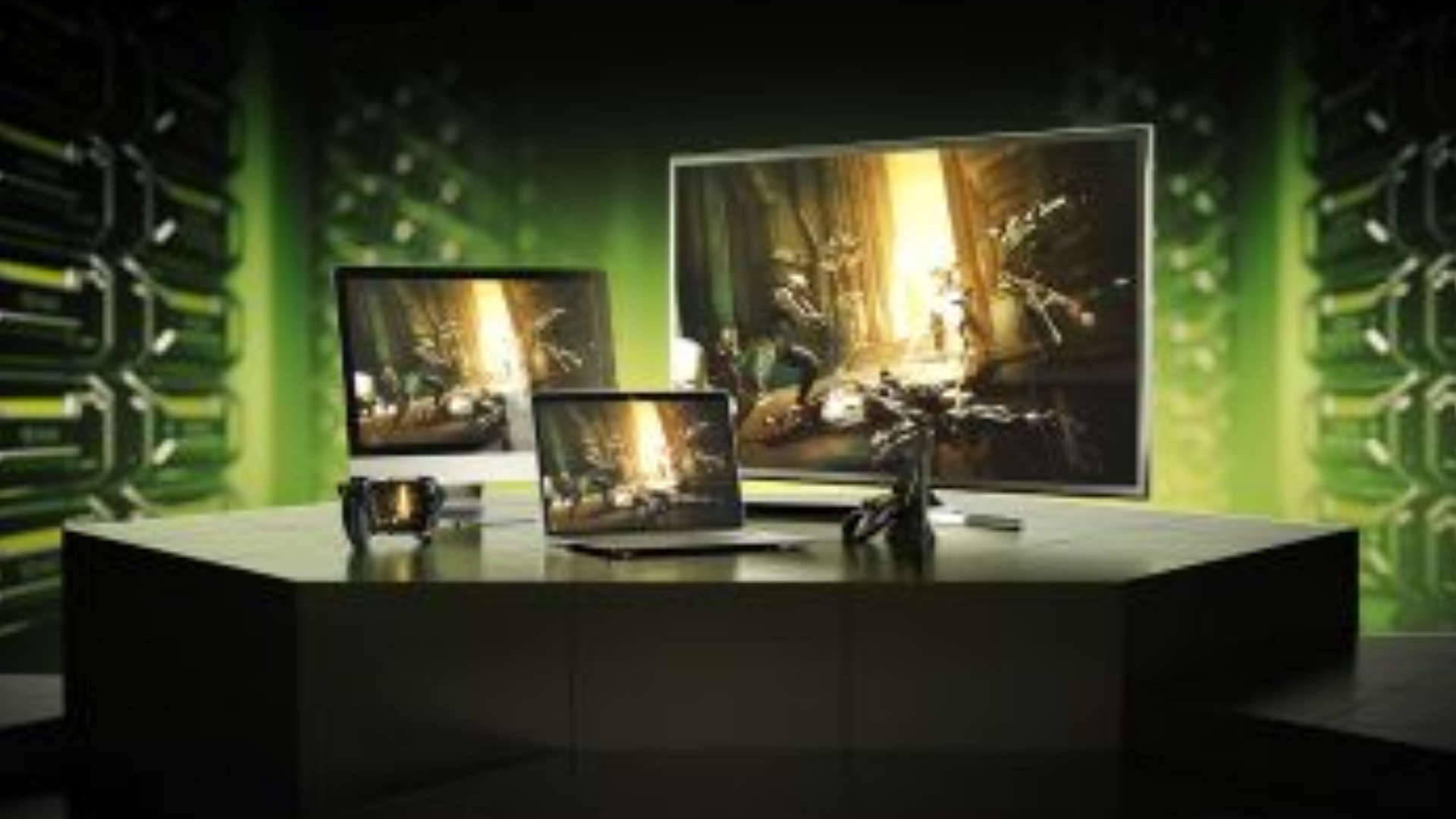
There are three options for an Nvidia GeForce Now membership: ‘free’ which, if you hadn’t guessed, costs nothing; ‘Priority’ which is a paid service costing $49.99 (£44.99) for 6 months; and a top-tier RTX 3080 package costing $99.99 (£89.99) for 6 months. All options let you rent a cloud server to play your games, but the two paid for options give you higher spec RTX level GPUs to play with, higher resolution gaming, and longer play times.
Otherwise, you only get to play for one hour at a time and don’t get access to any of those shiny ray-traced effects in the games which support them.
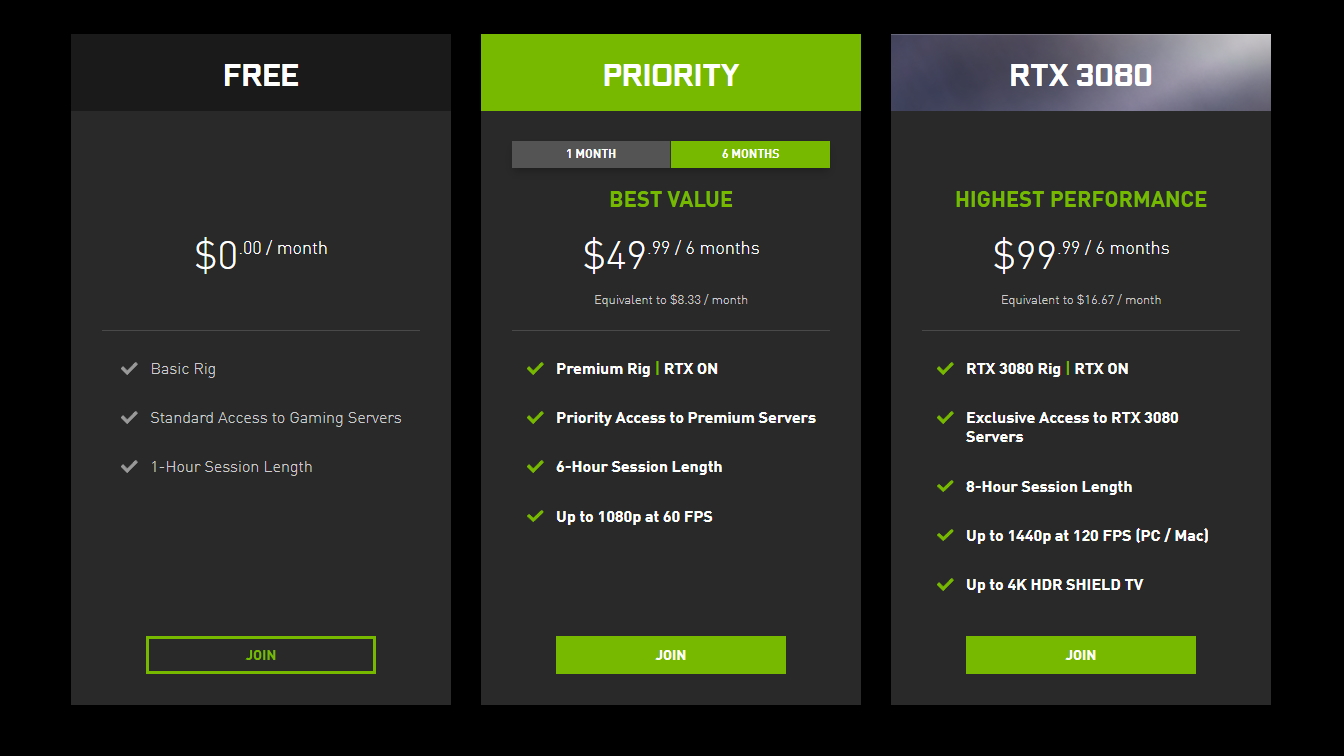
The service gives you access only to games you already own on Steam, Battle.net, Epic, and UPlay, although Steam Family Sharing works perfectly well, and GFN Thursday rewards can include some free games, too. Either way, it’s a service best suited for those who already have a bursting game library. If you’re just getting into PC gaming there’s no way to test out games you don’t already own, unless a generous loved one will let you have a go through Steam Family Sharing.
Still, the number of GFN supported games is potentially a little lacking due to some controversy causing upset between GeForce Now and certain game developers. Though the library is regularly growing. There have been instances of unsupported games working, but a lot of that has now been patched out, with Origin games being the only ones left with a workaround.
Although you’re somewhat limited by your hardware with GeForce Now, it will work on even some of the lowliest of PCs and laptops, and there are a host of options that mean you can access GeForce Now from loads of different platforms.
If you have a desktop machine or laptop to play on, it’ll need Windows 7 64-bit or above, a dual-core CPU that runs at 2GHz or faster, 4GB of RAM or more, and a GPU that supports DirectX 11. That could either be an Nvidia GeForce 600 series and up, AMD Radeon HD 3000 series or newer, or it can even run solely on your CPU’s integrated graphics—the requirements page lists Intel HD Graphics 2000 or newer.
There’s also a GeForce Now app for Android 5.0 (including Android TV boxes, though that’s still in beta), as long as you have 2GB of RAM and a controller that plugs into your device. And if you only have access to *shudder* a Mac, the service has also been tested on MacBook models from as far back as 2008. As long as you’re running macOS version 10.10 or above, you should be fine.
You can even download the app or access GeForce Now through your Chrome browser, or Safari browser on your Mac or iPhone.
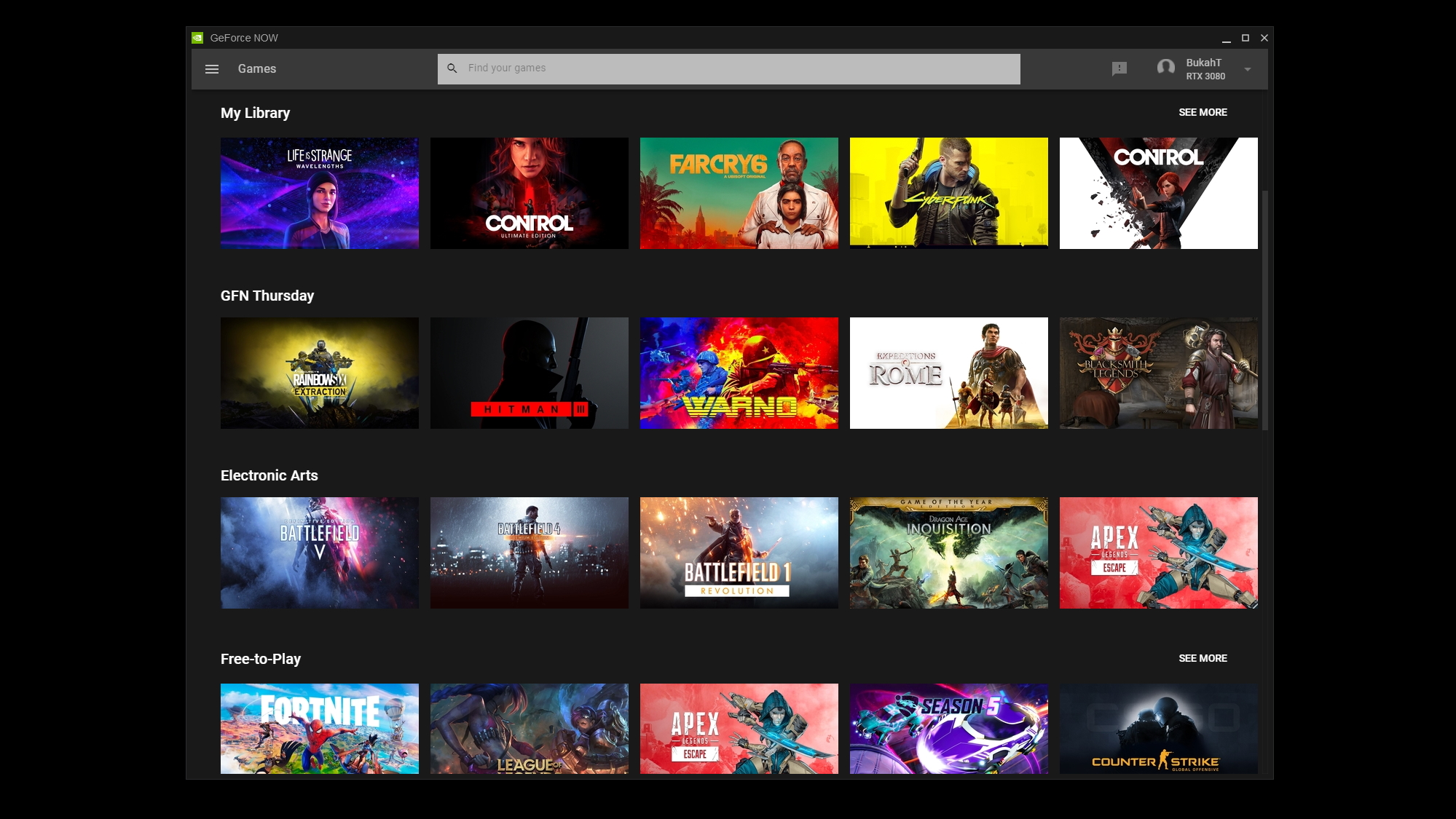
Users with an Nvidia Shield TV can also play games through GeForce Now, and the service now offers low-res auto upscaling to 4K on the big screen at 60 fps. It’s possible to use the 4K upscaling functionality from 360p through 1440p—it was previously limited to just 720p and 1080p. That means less bandwidth is eaten up, and less opportunity for lag to creep in, but the image fidelity is still there.
You can also play in native 4K HDR on the Shield device, too, where on PC and Mac it’s limited to 1440p at 120 fps.
GeForce Now has a few streaming quality modes, each of which will automatically set your game’s graphics to the most optimal settings, depending on how much bandwidth you’re willing to allocate to the service. Or you can create a custom streaming quality, and GFN will try to predict how much data usage it’ll eat up per hour. We always recommend using an ethernet connection where possible to alleviate lag, but a 5GHz Wi-Fi connection should be fine too.
My major gripes with GFN, aside from its stunted list of supported games, is the UI. Navigating it is a bit of a pain; it’s like it tries to make you believe you already own certain games when they’re not actually in your library. It could do with a tidy up honestly, to make it clearer which games are available to play, and perhaps easier for you to organise your games the way you want.
But GeForce Now is one of the cheapest game streaming services to date, and the free membership option makes it all the more accessible, though it can be a little off-putting with what I’ve heard of the peak server wait times. The technology, however, is unsurpassed, with games looking and playing as good through the streaming service as they do played natively on your own PC.
Generally though, the service does what it says it will: it gives you access to most of your games, and removes the need for high-end hardware, or downloading, in order to play them.
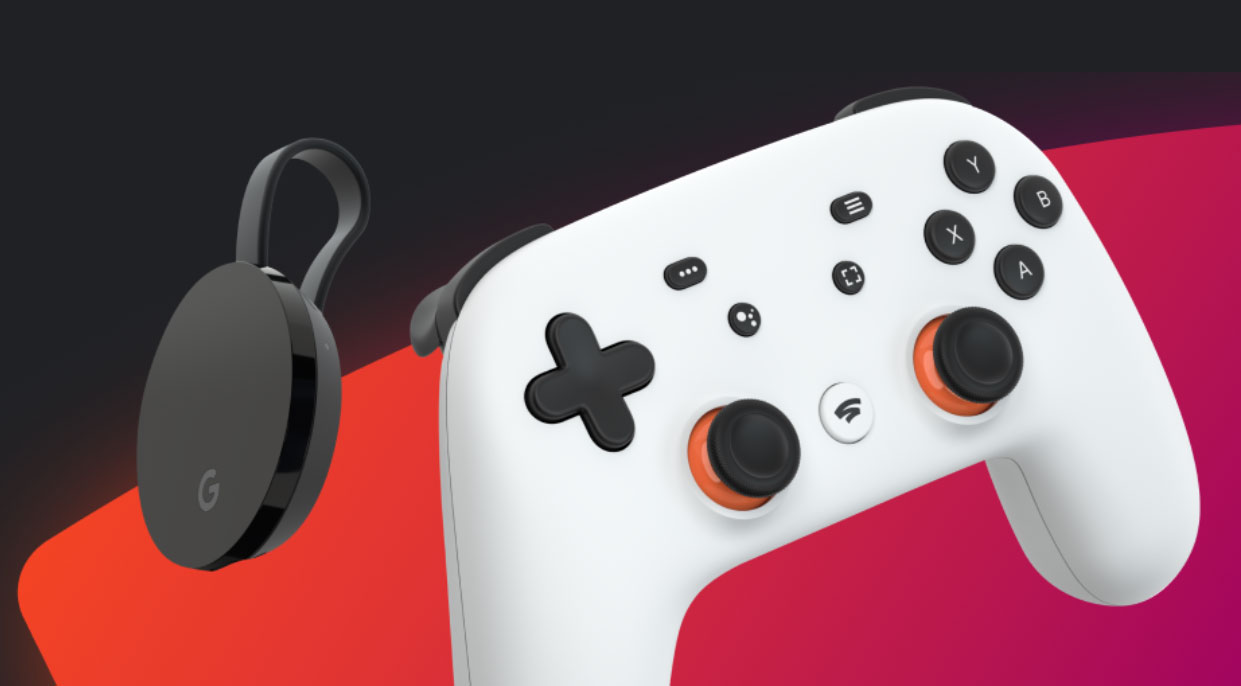
Stadia is Google’s own game streaming platform. The main difference between Stadia and other game streaming services is, because it’s a platform, you cannot play games you already own on other game launchers. Everything must be purchased through Stadia and will remain on the platform. So, if you already have an extensive game library on a different platform, and don’t feel like forking out for a second copy of your favorite games, it may not be the service for you.
The games can also be hideously expensive too.
If you’re just starting out, though, and have gotten past the initial shock of not being able to import games you already own, the Pro subscription has a little more to offer. Google offers a free month of Stadia subscription, which otherwise costs $9.99 (£8.99) per month. For that, you gain access to a host of free games, with more being added every month, along with discounts, 4K streaming, HDR, and 5.1 surround sound for your games.
There’s also a Premier Edition bundle that comes with a Stadia Controller and Chromecast Ultra. Nowadays, you can find the latter for around $99 (£89.99) instead of its original RRP of $129 (£119), but you still need a Stadia subscription to play. The accompanying Bluetooth Stadia Controller can wirelessly link to your TV through the Chromecast Ultra, though, or to your computer at stadia.com, or even to your mobile device.
And while the list of compatible devices is in no way exhaustive, it’s the only controller on the market that works wirelessly with Chromecast Ultra TVs.
Google Stadia Specs
Min network: 10 Mbps minimum, 35 Mbps for 4K
Standard: $9.99 (£8.99)/month – 1 month free, 4K, 60fps, HDR, 5.1 surround sound
Premier bundle: Controller + Chromecast Ultra
The site recommends a 10 Mbps internet connection as a minimum for standard gaming, but there are several data usage options listed on the support page to help you figure out how much bandwidth Stadia will be eating up. And although there are plenty of accounts of people getting 60 fps at 4K through the service through an ethernet connection, it still may not be enough to keep up with some of the more competitive games.
Just as an aside, if you’re thinking of spending some of your Google Play balance—a Google platform will surely let you use your Google Play credits, right?—currently you can only use your Google Play balance to purchase games via the Stadia Android app and not via Stadia.com. You also can’t purchase games at all through the Chromecast Ultra.
So while there are some drawbacks to the service, particularly in having to re-buy any games you want to play through it, Stadia will at least give you a decent streamed gaming experience that’s an awful lot like a gaming PC. And it does so in style, but still with a lot of caveats.
The main fear I have in considering signing up is that, should Stadia be discontinued, I’d lose access to any games purchased through the platform. Poof, gone, just like that. There’s a lot of discourse online about exactly how committed Google is to the game streaming service, and, although you’d expect there to be some form of replacement if Stadia did go under, I’m not into the idea of having that eventuality hanging over my head.
It has, after all, recently disbanded the big internal studio headed by Jade Raymond, which was going to create bespoke games specifically for Stadia. So all the fancy effects only to be found on first-party Stadia games that Google promised at launch will never be seen on your screen.
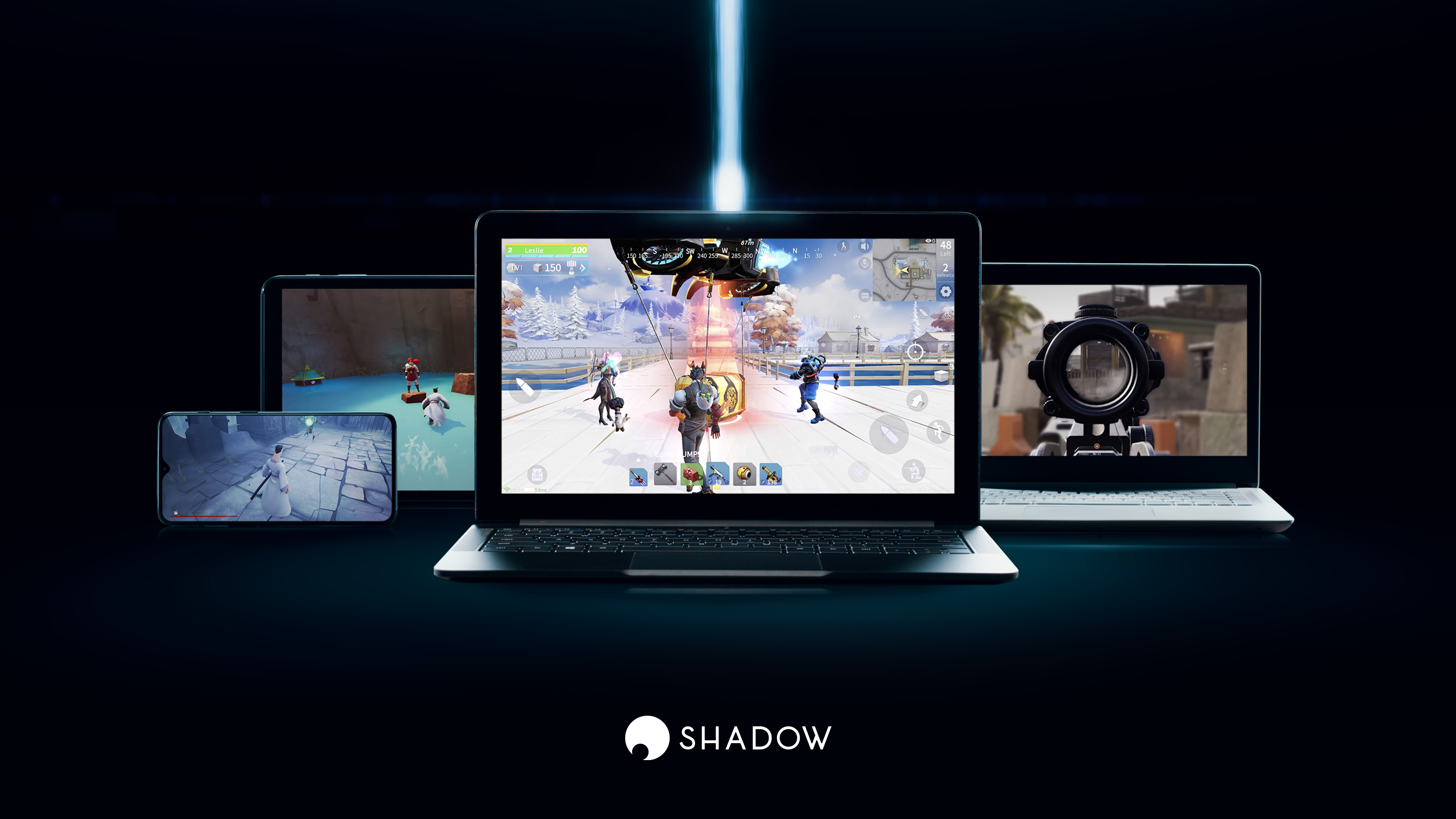
Blade’s Shadow cloud streaming is a little different to the others; rather than being a game streaming service, it’s a full PC streaming service. There are three options for a subscription here, though sadly with no free option available. The standard Shadow Boost monthly subscription costs $14.99 (£14.99), or $11.99 (£12.99) if you sign up for the 12-month contract.
Already that’s miles above the others, but that price gives you access to essentially your own fully functioning Windows 10 PC, packing a GeForce GTX 1080 equivalent, 12GB memory, a four-core, eight-thread CPU, and 256GB of storage. Even with the lowest config then, you should be able to run anything you own at 1080p at decent frames.
Okay, colour me intrigued.
Looking down the specs page, there are some much juicier upgrades to come. Listed as ‘available soon,’ Shadow Ultra will set you back $29.99 (£29.99) per month, or $24.99 (£24.99) with the 12-month plan. That should kick things up a notch, with access to a GeForce RTX 2080 equivalent, 16GB memory, a four-core, eight-thread CPU, and a 256GB SSD and 256GB HDD. This kind of config should guarantee some decent 1440p gaming or something like 144fps at 1080p—Ray Tracing included. You also have the option to upgrade your storage, on this plan, to host a 2TB HDD instead.
Now, Shadow Infinite would be a big step up from there. For $49.99 (£49.99) per month, or $39.99 (£39.99) on the 12-month contract, you’d unlock the equivalent power of a 24GB GeForce RTX Titan graphics card, a six-core, 12-thread CPU, 32GB memory, and 256GB SSD storage, plus a 768GB HDD. Again, storage upgrades are available up to 2TB HDD, but more importantly, this config will provide some juicy performance if you have the bandwidth to support it.
Blade Shadow Specs
Min network: 15Mbps
Standard: $11.99 (£12.99) – GTX 1080, 4-core 8-thread CPU, 12GB memory, 256GB storage
Ultra: $24.99 (£24.99) – RTX 2080, 4-core 8-thread CPU, 16GB memory, 256GB SSD, 256GB HDD
Infinite: $39.99 (£39.99) RTX Titan, 6-core, 12-thread CPU, 32GB memory, 256GB SSD, 768GB HDD
The main benefit to all this is that no matter what plan you’re on, you’ll be given access to your own high-end PC. That means you can download and play any game or application as if you had the PC right there in front of you. Not being limited to games opens up a whole world of potential for the processing power now at your fingertips.
No, you can’t mine with it so don’t get any ideas, but you can get access to any creative programs, 3D modelling, or rendering software you own. Oh, and when you download games onto your cloud PC, you get a 1Gb/s download speed, regardless of your home connection speed.
The main issue is the small amount of storage space for the standard subscription. Doesn’t matter how good the download speed is, you’re still only going to have space for a select few AAA games. This is an issue the options above have managed to circumvent, but it’s still pretty cool that you have your own PC in the cloud at all.
Shadow can be accessed through Windows, macOS, Android, Android TV, iOS, tvOS, and Linux, via the Shadow app. There’s also the Blade Shadow Ghost, a little dock for use with a standard TV, which boasts 4K streaming at 60fps and 1080p at 144fps, and can run over WiFi where its predecessor (the Shadow Box) could not.
Blade recommends around a 15Mbps connection for standard, and the service supposedly works via 4G LTE (just make sure you’re on unlimited data or you’ll be in the red, in no time).
Originally, with servers based only in France, the service was limited to use in and around that region—being far from your rented PC is unfortunately likely to incite lag. Now though, datacenters in Amsterdam, Chicago, Dallas, New York, Paris, Santa Clara, Gravelines and Seoul, mean there are a lot more server options available. As the service improves, so should issues with server lag.
There is some concern around Blade’s financial stance at the moment with the company having filed for bankruptcy recently. It’s convinced this will have minimal impact on the servers, though, and the service is set to keep running as normal, with Blade feeling ‘strengthened and emboldened’ by its experience. So hopefully it’s able to bounce back and keep doing the incredible work it does.
Conclusion
Cloud game-streaming still has a long way to go, but with more options springing up all the time, it’s clear companies see the benefits. Xbox has even jumped on the bandwagon with Project xCloud now becoming Xbox Cloud Gaming inside Game Pass Ultimate for $15 per month. And with the competition heating up, services will be pushed to improve—we hope.
Personally, I’m more likely to back a small startup company with big, brilliant ideas like Blade. Right now there may be some hiccups, but it’s a fantastic and ambitious business model that gives users what they want without forcing them to buy their own games again, or learn to navigate a new UI (unless you’re coming over from Mac, I guess). And if it goes under, you really have nothing to lose. All your save games are likely to be on the cloud anyway, and you can freely access cloud storage spaces to save your files, too.
At the end of the day, I’m still pretty skeptical about playing competitive games through any of the above game streaming services. Even paying for higher specs can’t save you from the scourge of terrible ping, but the more we believe and invest in small-time businesses like Blade, the less we’ll have to worry about that kind of stuff.

